Customer service is all about the attitude
The attitude of people in touch with customers is the most important ingredient of every customer service department. A positive experience can greatly increase the success of your business.
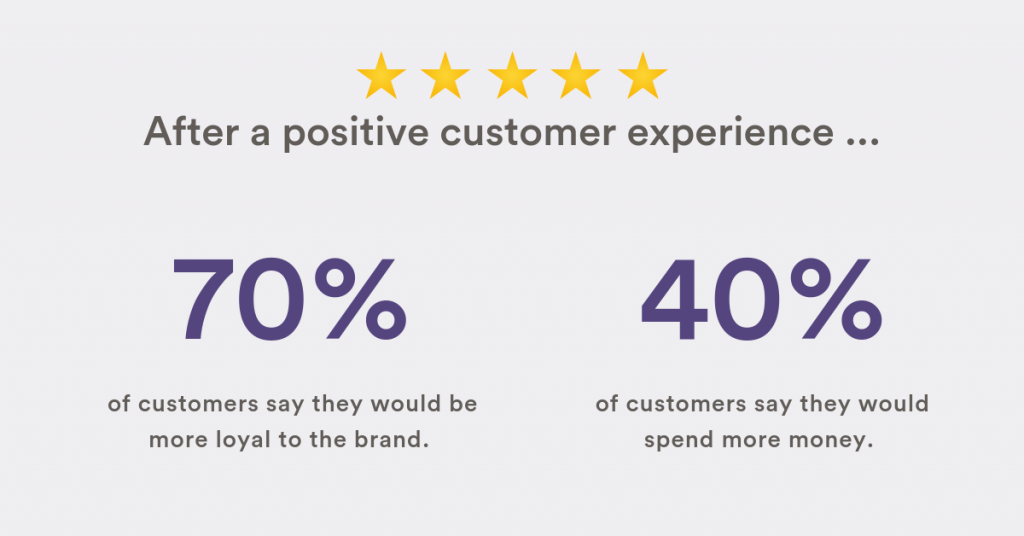
Perhaps you’re having a bad day or your baby/dog/neighbours kept you up all night. Nevertheless, your clients deserve a friendly and patient approach from you. Keep in mind that when they’re contacting you, their focus is on their issue – and so should be yours.
Very often people reach out to customer support when something is wrong – the order hasn’t arrived, the product has faults, there’s an issue with payment… All these situations can frustrate them and cause a less than friendly attitude from their side. Here are some tips that will help you make customers feel welcome, important, and appreciated even when they approach you frustrated:
- Answer the phone with a smile. Research shows that our voice actually changes when we smile and people can instinctively sense if we’re replying with positive attitude.
- Don’t take customer complaints personally. Think of it as an opportunity to improve the service, and, if this improvement is out of your hands – what’s the point in feeling guilty after all?
- Use their language. Honesty and human language go a long way. If you’re simply repeating the scripted answers in an overly formal tone, people might get even more frustrated and feel like a number in a system.
- Use positive language. Try forming sentences that contain positive sentences – it can change the setting drastically. Instead of saying: “We don’t provide this feature yet.”, try saying “This feature is in development. Do you want me to notify you when it’s made available?”
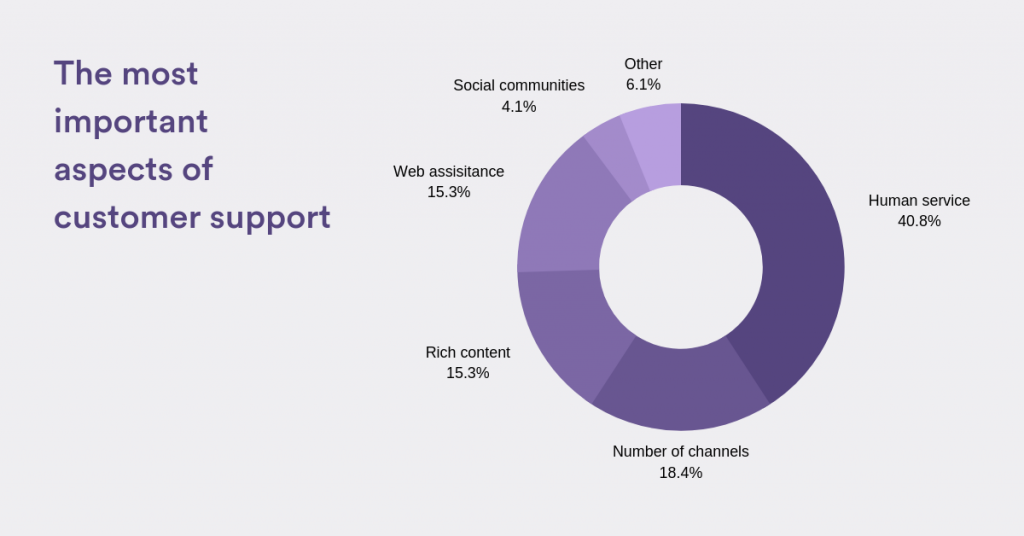
Customers choose the channels
What’s the most important customer channel?
An experienced customer service expert will tell you it’s any channel the customer chooses – that is, a channel where the customers are. To provide great customer service or support, you need to understand how customers choose the way they are going to contact you.
“Customers often choose channels based upon the perceived urgency and complexity of their problem.”
Jeff Toister
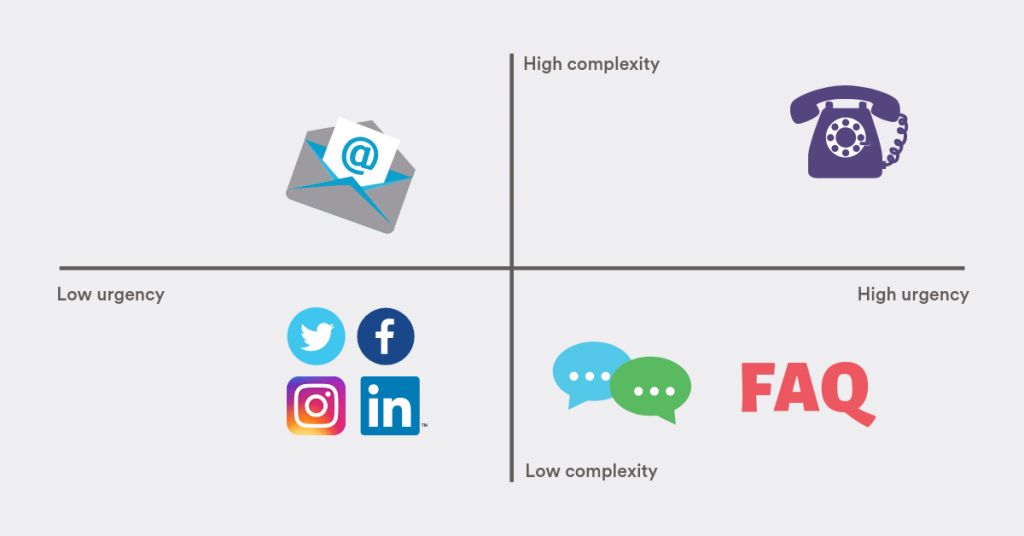
However, most customers today still largely rely on emails to reach out to the companies. Research shows that email is still the preferred channel of communication for most clients.
Of course, each channel comes with its rules of conduct and expectations and this is what we’re covering in the next few paragraphs.
Are you responding in 15 minutes yet?
In today’s world of instant messaging, people looking for your assistance expect fast responses. And even if we’re not talking about chat messaging (research shows that email is still the preferred channel of communication for most clients), it’s important to respond relatively quickly.
Just how fast is that? Jeff Toister, an expert in customer service conducted a research:
“A one hour email response time will meet the expectations of 89 percent of your customers. Companies aiming for world-class customer service should respond within 15 minutes or less.” Jeff Toister
So how can you respond faster on email? Start with the right tool. Loop Email is an email client made for teams and efficient work that shortens your response times. How does it do that? With its cool features of course!
One of the big reasons for slow responses is in fact a lack of communication between departments. Loop Email is built on top of your existing email account but it organizes all your communication – external and internal – in one place.
If you need to check the delivery date with someone in a different department, it’s very easy to simply message them within the app. And if you need to involve more people into helping a customer, it can be done with one click (minus the annoying forwards) using loops.
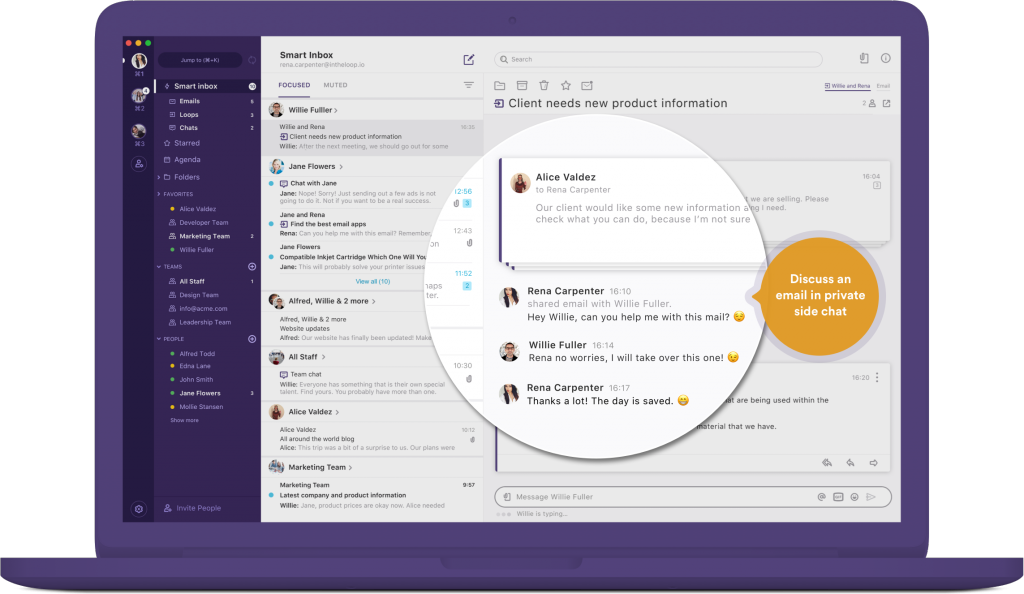
Lastly, our app helps you share the workload. Let your co-workers help you out by giving them access to the channel and easily assigning them to emails like tickets without the customer ever knowing about it. It’s all done within a
To build on that, here are some other useful tips for a faster customer service:
- Help them help themselves. A simple way of speeding up your customer service is
in fact to reduce the need for it in the first place. Introduce self-service options that address the most common situations and issues. - Introduce more than one channel. As mentioned above, email is still the most popular way of clients contacting us.
- Have answers ready. After some time in the business, you’ll surely figure out the most common issues people address when contacting you. Have answers prepared so you can respond quickly.
- Think 2 steps ahead. Think about the customer experience and anticipate potential questions and needs. Make their life easier before they even come to you (think efficient emails with tips or a prompt call before a
licence expires) and you’ll have loyal customers. - Notify them of waiting times. If you know a certain reply will take longer, let people know that you’re working on it and add an estimate. We tend to be more patient when we know the approximate time of wait rather than being in the dark.
- And while speed matters, empathy
and attitude are still the most important.
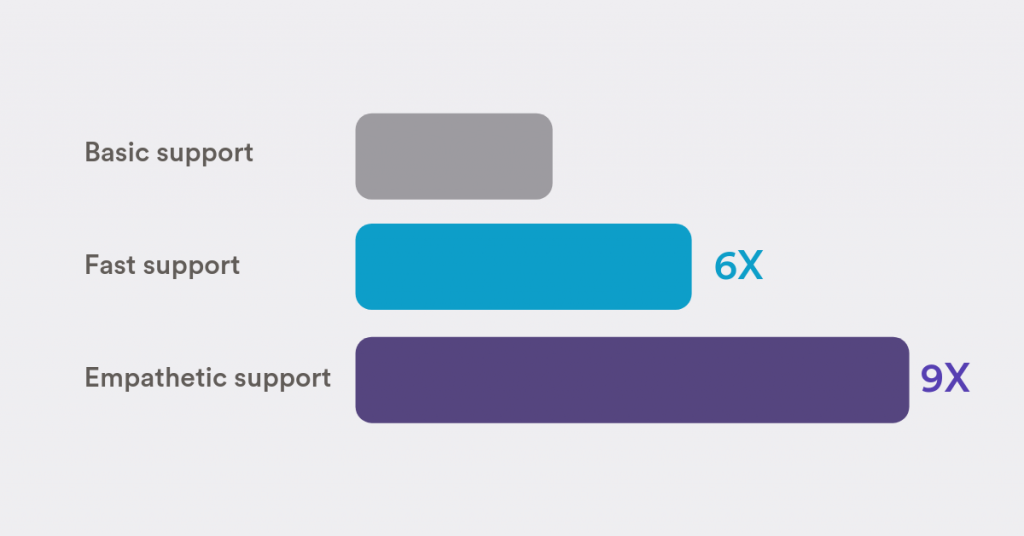
It’s a team effort
Who should be focusing on customer feedback in your company? The customer support department, right? If that’s your final answer, you might be missing an important business opportunity.
Collaboration between departments is crucial when dealing with customers. For example, the customer support agent needs to be in touch with the shipping department to provide the right answer to the client or ask for help from the development team to help solve an issue the customer is facing. So far, so good. But it works the other way around as well.
Customer feedback is an invaluable source of information and a mechanism that can not only help you improve your current products or services, but future products as well.
In theory, all this sounds great. In practice, however, it gets complicated. Keeping in touch with different departments can get messy and time-consuming. Loop Email makes it easier with three features that can solve your collaboration woes and encourage working together:
- Give everyone access to emails with Shared inbox. Support email accounts tend to be public email accounts with many people handling them. Loop Email’s Shared inbox brings this to a new level. Not only will different departments have access to useful customer feedback – support agents will be able to assign emails to the right people. That way Tina from shipping won’t have to wonder which email matters, but will have it pop-up in a designated “Assigned to me” folder. Neat and efficient.
- Create Teams to connect different departments/people. If you prefer to keep the support email address in the customer support department, there are other solutions. In Loop Email you can create a team that brings customer support and development together, or you can create a special team just for a specific client or a product. The team then has a dedicated channel for internal chats, can assign emails to each other and store all their conversations in one place. IT and customer support can now create a “Hot-fix” team and speed up problem solving – sans a chain of forwarded emails and CCs.
- Use loops to include people for quick assistance. When you don’t need a dedicated team but still want to share an email from a client, loops are your answer. With just one click you share an email with Mark from accounting and check what happened with the customer’s refund in the side-chat just below the email. Mark will see the entire conversation with the client and will be kept in the loop (in case the name wasn’t obvious enough :)) until you stop sharing it. This eliminates the need for constant forwards and endless, messy email chains.
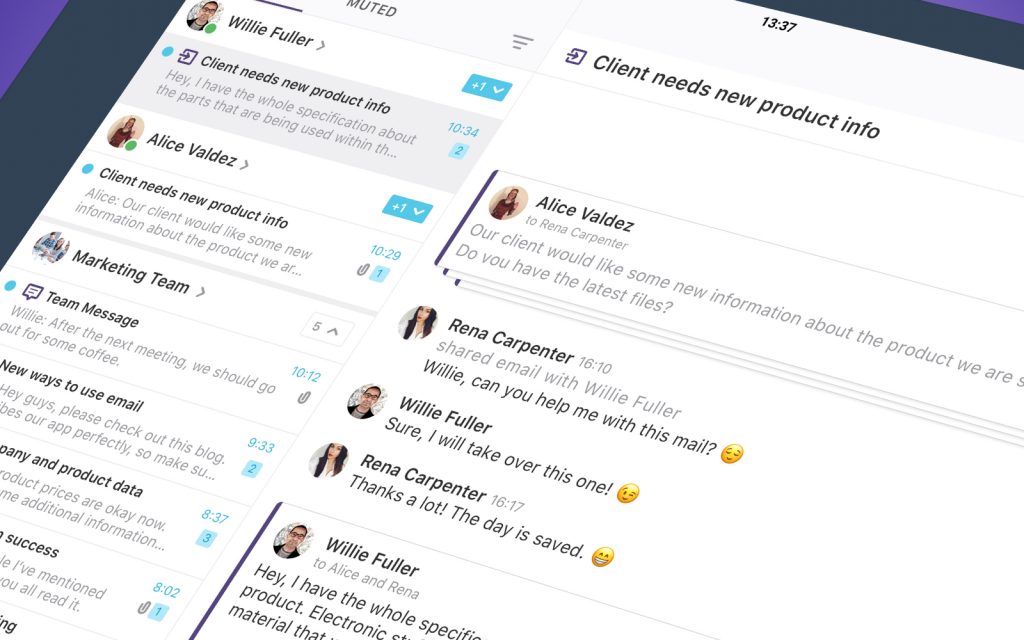
Know your customers and their history with you
Nobody likes feeling like a number, even if we rationally know that’s exactly what we are in some situations. Customer support is no different, in fact, it’s becoming extremely important to show a personal touch towards the customer.
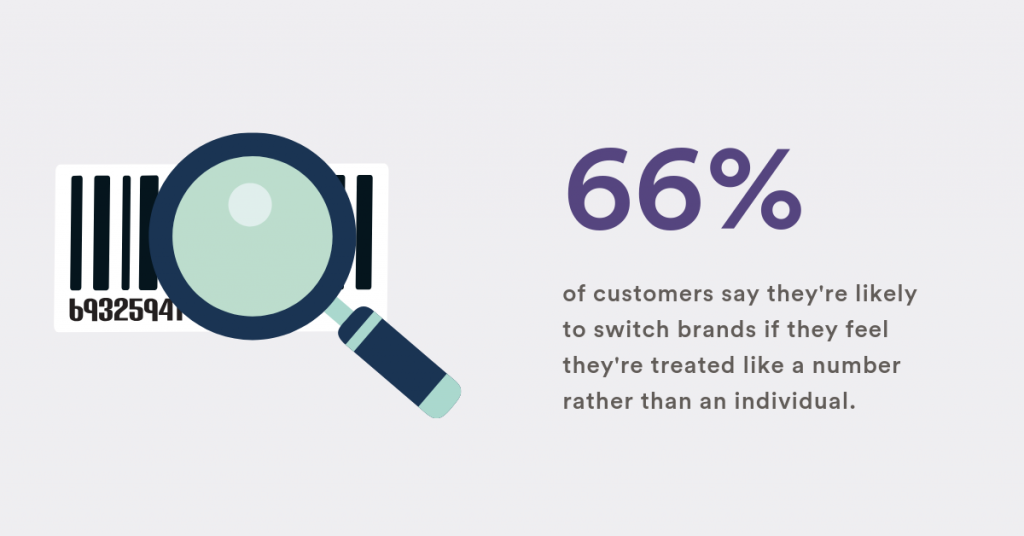
For example, when a client contacts you with a repeat problem, there’s no need to ask all those questions again – you just take a look at the last conversation and provide a personalized, faster response. If you make it clear that you “remember” your previous interaction, the client is more likely to feel like they matter and they’re more than a ticket in your system.
With today’s technology, it should no longer be impossible to keep track of all interactions you ever had with a client. That’s why CRM tools are here.
But even if your business is not suited for a feature-heavy and expensive app, you can still have great overview right on email. Loop Email, an email and messaging app for teams (especially customer service ones!) sorts you contacts into channels, so all the communication you had with the client and all the attachments you exchanged with them is stored in one place – a place you can reach with one simple click!
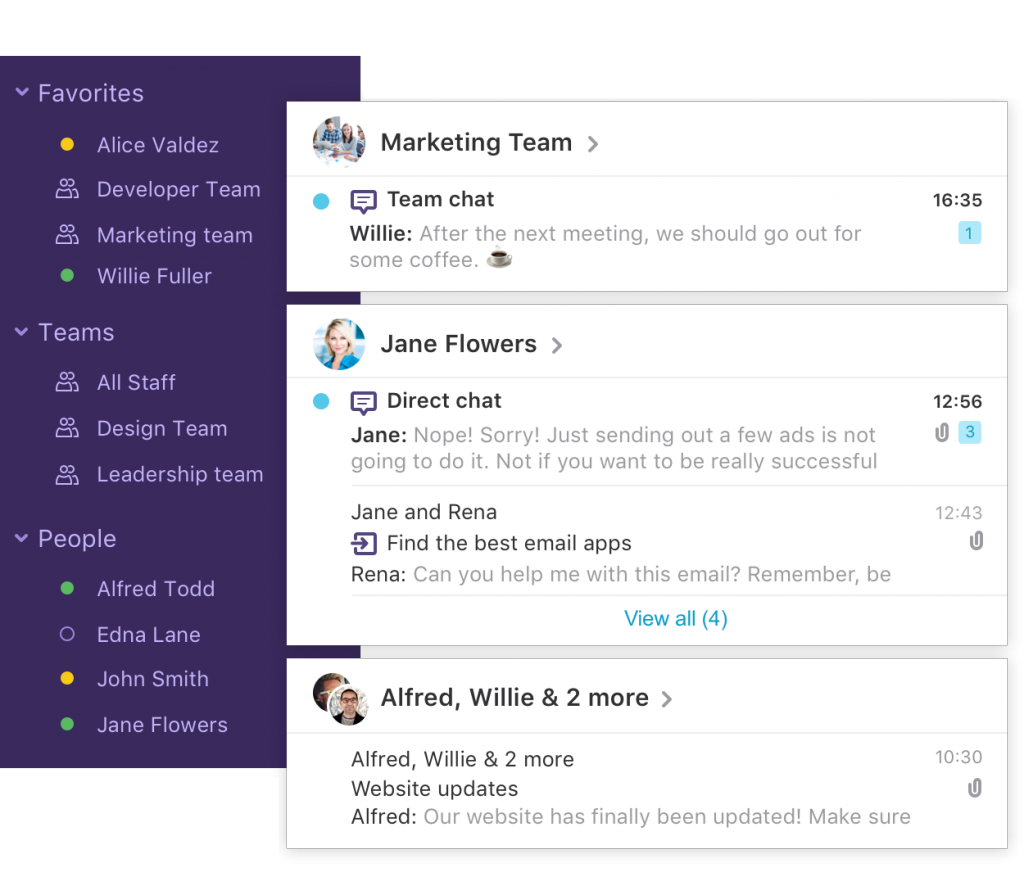
Create a customer service vision
“Customer service vision is a shared definition of outstanding service that gets everyone one the same page.”
Jeff Toister
Your customer service needs just as much strategic planning and thought as the rest of your business. If you don’t know why and how you’re doing customer service, how can you provide a consistently great customer service over the board or introduce a new employee to the department?
Sadly, this is still the case of many businesses.
Don’t mistake a customer service vision with a company’s vision statement – a good customer service vision statement complements it. It should answer the questions:
- Who are our customers?
- What do our customers want from us?
- What do we do to serve these customers?
- How do we want them to feel about our service?
For a more detailed, step by step approach, here’s a great guide to developing your customer service vision.
After you have your vision clearly written, it’s your job as a leader to stick to it in the long run and lead as an example, guiding your team towards great customer service.
Want to learn more about providing great customer service? Check out our interview with Jeff Toister, a customer service expert where he provides many useful tips!




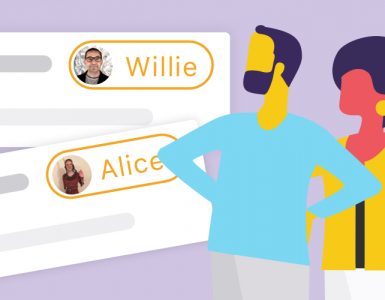
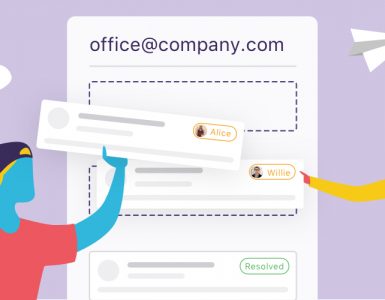
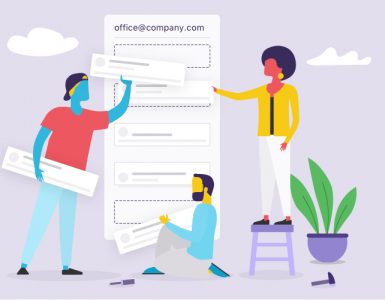










Add comment